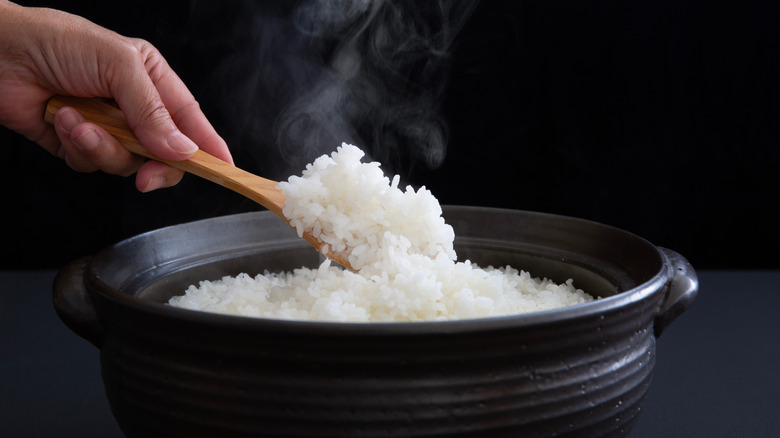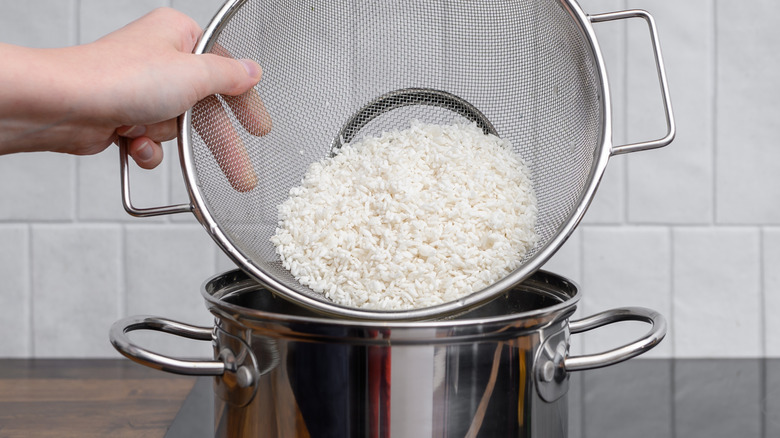Are You Using The 'Golden Ratio' To Cook Rice? Here's How It Works
Cooking rice feels deceptively simple until you realize the instructions on the bag don't scale. Double the rice and water, and somehow it turns out gluey or undercooked. The missing piece is the "golden ratio" — the formula that accounts for both absorption and evaporation — and it's essential for cooking perfect rice. As your rice cooks, part of the water is absorbed by the grains, while some of the water evaporates into steam. But that second part doesn't change, no matter how much rice you make.
So what exactly is the golden ratio? Use one cup of water for every cup of rice, then add an extra quarter to half of a cup to account for evaporation. Think of it as a 1:1 + ¼ to ½ ratio. For precision cooks, experts suggest adding about 1 ½% of the weight of the rice in salt before simmering. If that math feels like too much effort, the idiot-proof method for making perfect rice proves how universal this technique is. Once you master the ratio, you open the door to rice dishes beyond a plain bowl, like rice cooked in briny pickle juice, the most flavorful seasoned rice, or deeply satisfying fried rice — all with perfectly tender grains.
Why the golden ratio matters more than your cooking tool
Every culture with rice at its core, from Japan to Mexico, has its own tricks for getting rice right, but the golden ratio quietly underpins them all. Once you understand how water absorption and evaporation work, it becomes less about brand or gadget and more about physics. Even rice cookers rely on this principle: The machine controls evaporation so you don't have to. But when cooking rice on the stovetop, mastering the golden ratio makes the difference between fluffy and mushy textures.
The ratio also gives you more control when experimenting with other techniques. Japanese home cooks often lean on the rinse–ratio–rest method, which aligns perfectly with this formula, while others infuse the grains with flavor using everything from dashi to coconut milk, pineapple, and mango. Once you've nailed the baseline, it's easy to build on it to serve up stylish homemade rice bowls that taste as good as they look. The takeaway? Perfect rice isn't about following arbitrary instructions, it's about knowing your ratio, respecting evaporation, and letting the science do the work.

